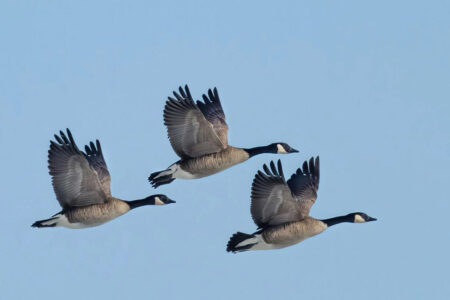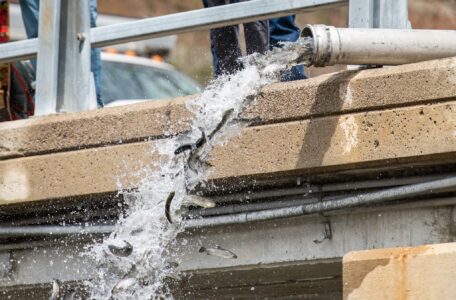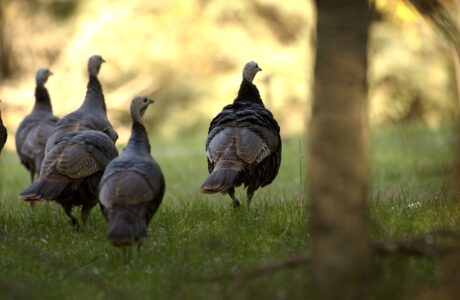Ruffed grouse count dips, but hunting prospects still strong
Outdoors report
IRON MOUNTAIN — The Wisconsin Department of Natural Resources has released data from its annual spring survey of ruffed grouse, showing a slight decrease from 2024.
Numbers, however, are still significantly up from the five-year average.
“Although we observed a decrease in drumming activity statewide, this slight decline still exceeded our expectations for this year,” said Alaina Roth, DNR ruffed grouse specialist. “In 2024, we saw a large, unexpected 57% increase in drumming activity, so a slight 6% decrease from 2024 is still good news overall and should mean good hunting prospects this fall.”
Exceptionally dry and favorable nesting and brooding conditions could have contributed to the increase in drumming activity in 2023 and 2024, Roth said.
Since 2021, survey data has been organized and analyzed by ruffed grouse priority areas to help monitor key populations across the state, as defined in the Wisconsin Ruffed Grouse Management Plan 2020-2030. The 2025 survey results for priority areas compared to 2024 showed:
— An 8% decrease in drumming, with an average of 2.13 drums per stop, in the Northern priority area.
— An 11% increase in drumming, with an average of 0.46 drums per stop, in the Central priority area.
Meanwhile, the DNR reported average pheasant observations at 0.81 per stop, an increase from 2024 at 0.62 pheasants per stop. For the second year in a row, the count remains above the most recent five-year average of 0.52 per stop.
DNR wildlife biologists use a measurement known as an abundance index to assess the state’s wild pheasant population each year. On trend from past years, abundance was highest in the northwestern part of Wisconsin’s pheasant range and lowest in the east-central region.
For more on the surveys, go to https://dnr.wisconsin.gov/topic/WildlifeHabitat/reports.
*****
A nonperishable food drive will take place next week at Michigan Department of Natural Resources customer service centers. There are centers in the Upper Peninsula in Escanaba, Marquette, Baraga, Newberry and Sault Ste. Marie.
The drive is sponsored by the DNR’s Hunters Feeding Michigan Program in partnership with the Food Bank Council of Michigan. Those dropping off non-perishable food items at the centers between 8 a.m. and 5 p.m. from Monday through Friday will receive a “Hunters Feeding Michigan Supporter” sticker.
The food drive is a first for Hunters Feeding Michigan, which is a program that offers hunters a way to share their harvest by donating deer at a participating processor. For the summer event, you don’t have to be a hunter to help target hunger, organizers said.
*****
The Wisconsin DNR reported that anglers in the Marinette area were landing salmon east of Green Island and south of Chambers Island. Green flashers and flies were catching the most fish. A few fish were also being caught on spoons and an occasional steelhead and brown trout were showing up.
The Michigan DNR suggests using lighter line and smaller, natural-colored lures during summer. Fish can be more cautious in clear, warm water, so subtle presentations often work best.
The DNR reported this U.P. activity:
Little Bay de Noc: Walleye anglers reported slow fishing. Those who had success caught fish sporadically during dawn or dusk. Some trolled crawler harnesses or crankbaits, while others cast jigs tipped with worms or soft plastics. Smallmouth bass fishing was good, with anglers targeting structure or rocky areas using soft plastics.
Big Bay de Noc: Smallmouth bass fishing was good. Anglers caught fish in the Garden and Ogontz bays. Some anglers are targeting offshore reefs or islands, although some anglers are still catching fish near the shore by vegetation.
Fairport: Anglers caught Chinook salmon, with steelhead as the occasional by-catch. Both spoons and flasher-fly presentations were successful.
Keweenaw Bay/ Huron Bay: Anglers reported catching a fair number of coho salmon, along with very few chinook salmon, over the past week. These were caught by trolling crankbaits, spoons, and flasher/flies in 25 to 80 feet of water. Those targeting lake trout were successful when trolling and jigging with both natural and artificial presentations in 100 to 200 feet of water. Anglers fishing for whitefish saw little success.
Marquette: The coho salmon and Chinook salmon bite around Marquette remained slow.
Au Train: Only a few anglers were out. One caught his limit of lake trout in two and a half hours, along with a 16-pound king salmon, so the fish were still out there. The other caught five lake trout in three hours. Both were trolling for lake trout at depths of 150 to 180 feet northeast of Au Train Island, out in the flats.
Traverse Bay/Portage Entry: Anglers reported catching lake trout while jigging between 50 and 150 feet of water. They had greater success when jigging with natural bait. Anglers trolling spoons and flasher/flies caught lake trout as well as a few coho. Most success occurred in 60 to 90 feet of water, with most fish suspended in the water column.



